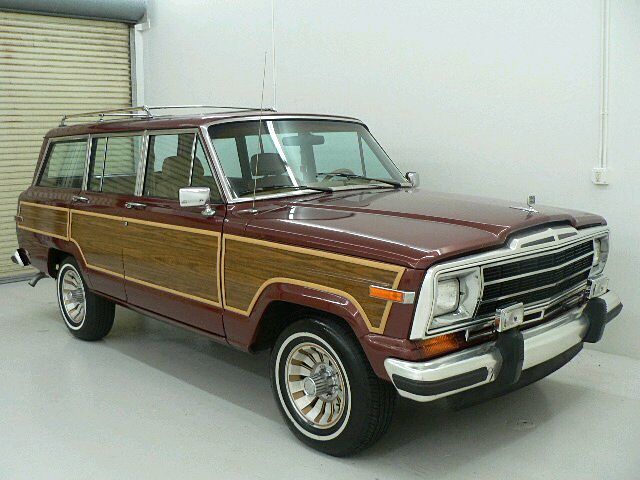SJ Wagoneers

The Jeep Wagoneer was an early sport utility vehicle (SUV), produced under varying types from 1963 to 1991. It was noteworthy for being in production for more than 28 years with only minor mechanical changes. The Jeep Wagoneer created a whole new category of so-called sports-utility vehicles and its massive estate car design was the most car-like 4x4" that defined the boxy, macho shape copied by others. A overhead cam engine, along with independent front suspension (both later discontinued), supplemented with features unheard of in any other 4 wheel drive vehicle (including power steering and automatic transmission), made it revolutionary at the time. A solid front axle was available as well. Compared with offerings from International Harvester and Land Rover which were producing utilitarian work-oriented vehicles that were quite truck-like on the inside. The Wagoneer was the first true luxury 4x4.
The Wagoneer is based on the Jeep SJ platform and debuted seven years (24 years in the United States) before the Land Rovers. It was also one of the last few vehicles sold in the United States that still used a carburetor, well after most other vehicles had switched to fuel injection. Only Isuzu with its base-model pickup truck would hold out longer, selling its last carbureted vehicle in 1993.
Super Wagoneer
Late-year 1965 Wagoneers and Gladiator pickup trucks were available with the 250 hp (186 kW) 327 cu in (5.4 L) AMC V8 engine, which proved to be a popular option. Additionally, the Tornado engine was replaced by American Motors' 232 cu in (3.8 L) OHV inline six. According to the automotive press this engine was smooth, powerful, reliable and easily-maintained.
The 1966 model year also saw the introduction of the more luxurious Super Wagoneer, initially with a higher-performance 270 hp (201 kW) version of the AMC V8, fitted with a four-barrel carburetor. With comfort and convenience features not found on other vehicles of its type at the time - e.g. push-button radio, seven-position tilt steering wheel, ceiling courtesy lights, air conditioning, power tailgate, power brakes, power steering, and console-shifted automatic trans. The Super Wagoneer is now widely regarded as the predecessor of today's luxury SUVs. Production of the Super Wagoneer ended in 1969.
1967 – 1971
Two-wheel drive models, which the four-wheel-drives had outsold from the beginning, were discontinued after the 1967 model year, and at the end of 1968 the slow-selling two-door versions were also discontinued. For 1968 through 1971 Wagoneers were powered by Buick’s 350 cu in (5.7 L) 230 hp (172 kW) Dauntless V8. The Buick made less horsepower than the previous AMC V8 (230 hp vs. 250), but more torque at lower revs. (350 foot-pounds force (470 N·m) at 2400 rpm vs. 340 ft·lbf (460 N·m) at 2600), and it had 5 main bearings instead of the AMC’s 4.
After the 1971 model year, Wagoneers were exclusively AMC powered.

